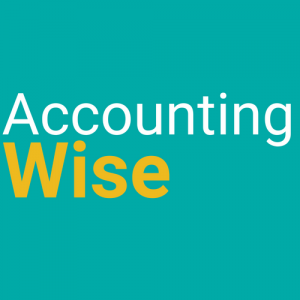Operational Efficiency Review – BBC Radio
Our Director Ian Jipps was hanging out at the BBC Radio 1 Live Lounge earlier today whilst the Accounting Wise Business Consultancy Department was conducting an Operational Efficiency review of BBC Radio. Whilst there he had time to pose for a photo! Contact us on 0330 113 8442 to find out how we could help improve the operational efficiency of your businesses operations!
What is Operational Efficency?
Operational efficiency isn’t just about reducing costs; other business objectives, including service quality, still have to be achieved in order to keep existing customers and revenue. Many organisations are too concerned with costs and are not aware that the real business value can be destroyed if approached purely as a cost cutting exercise.
If we are going to look at operational efficiency, we should aim for a consistent definition. ITIL V3 offers us the following:
Operational Efficiency – “A measure of whether the right amount of resources have been used to deliver a process, service or activity. An efficient process achieves its objectives with the minimum amount of time, money, people or other resources.”
Operational Effectiveness – “A measure of whether the objectives of a process, service or activity have been achieved. An effective process or activity is one that achieves its agreed objectives.”
So using these definitions in order to be efficient we must also be effective.
Objectives of Operational Efficency
One objective must be to deliver services which meet customer requirements/needs. In the current economic climate cost is obviously a big factor; so reducing the cost of delivering service is often the main driver for improving operational efficiency. It is worth noting that you can reduce your costs necessary to deliver service or operate a process, but if your customers leave because the quality of service has dropped then you are still in danger of going out of business.
Reduce Costs
How do you reduce cost? We’ve probably all seen the standard approach used when challenged to reduce costs by a certain percentage:
• Get rid of contractors, ban travel, reduce training, cancel bonuses, reduce permanent headcount
• Over-stretch remaining resources, lose key knowledge
• Reduce motivation and therefore productivity
• Negatively impact service quality, lose customers and revenue
At this point, usually further action will be required:
• Start the cycle again to reduce costs further
• Invest to improve service quality
I’ve seen organisations that go through this cycle every three or six months in a potential ‘death spiral’. Sometimes they manage to pull out of it, but it takes lots of effort. You can imagine the conversations that sometimes go on between customers and consultants…
Customer: “I need to save money.”
Consultant: “Is that the only benefit that you need?”
Customer: “Yes, saving money is what I’m tasked with doing; my number one priority. The board have told me that I have to save money.”
Consultant: “That’s easy, I can produce a business case which meets your cost reduction needs. In fact, I can exceed your target and reduce your costs by 100% – send everyone home. Of course, you’ll have no customers or revenue, so you’ll need to go home too.”
Yep, I know this is a little bit flippant, but it’s not that far away from some conversations that happen.
Joking aside, my view is that it’s easy to save money in the short term, but difficult to get the optimum balance between cost and quality.
Therefore, as value is often seen as quality/ cost, it’s about delivering the required quality of service for an acceptable cost.
Approach:
So, how do we approach driving increased operational efficiency bearing in mind these risks or constraints? We spoke about Operational efficiency being a measure of whether the right amount of resources is used to deliver a process, service or activity. But, what do we mean by resources?
Resource – “A generic term that includes IT Infrastructure, people, money or anything else that might help to deliver an IT Service. Resources are considered to be Assets of an organisation.” ITIL V3.
Asset – “Any resource or capability. Assets of a service provider include anything that could contribute to the delivery of a service. Assets can be one of the following types: Management, organisation, process, knowledge, people, information, applications, infrastructure, and financial capital.” ITIL V3
There’s a whole host of things that could contribute to greater operational efficiency – so why do many companies just purely focus on the tools or the numbers of people?
Quite often automation is used as one of the key techniques to improve operatioanl efficiency and can achieve significant benefits when implemented with effective business change. Automation is about using technology effectively to do tasks that would otherwise have been done manually. It can generate the following benefits:
• Improve the speed of the tasks
• Remove human error and manual activity
• Improve quality as well as reducing cost
Considerations:
• Usually some investment is required in tools
• Processes need to be clear, documented, repeatable and often simplified further to be effectively automated – no point in automating bad process
• The effort and investment required can be more than the benefits if you pick the wrong processes or tasks
I’ve had several customers who’ve made that last mistake – I usually advise looking at the most important services or process first, the ones that happen most often or the ones that generate the most revenue or customer impact. By looking at these you get a bigger return more quickly. I have one customer where we prioritised their business services in this way, and ended up only doing 13 services out of their list of hundreds because we got a massive operational efficiency improvement and a multimillion pound return very quickly. We concluded
that the effort involved may be too high for some of the lower value services.
Here are my considerations for anyone needing to generate additional operational efficiencies:
• Cost reduction does not equal Operational Efficiency
• Understand your current costs and baseline current service quality
• Agree required balance of Cost and Quality – It’s important to understand the targets and expectations from the beginning
• ISO/IEC20000; consider alignment as part of your toolkit in driving increased operational efficiency even if you don’t want to go through to certification
• Think People, Process, Partners & Products
• Tools alone do not generate the required benefits, effect cultural change
• Simplification and Standardisation are often the keys to increasing operational efficiency; Create repeatable standard processes and remove duplication and bottlenecks
• Utilise experience (good and bad) – too many organisations expect their people to get it right for them first time, without having the experience of how to do it
The basic principle of business is essentially quite simple, if you deliver services or products which meet your customer’s needs at an acceptable cost, you a likely to stay in business.
Check out the Accounting Wise services to see ways that we could help you improve your Operational Efficiency.









